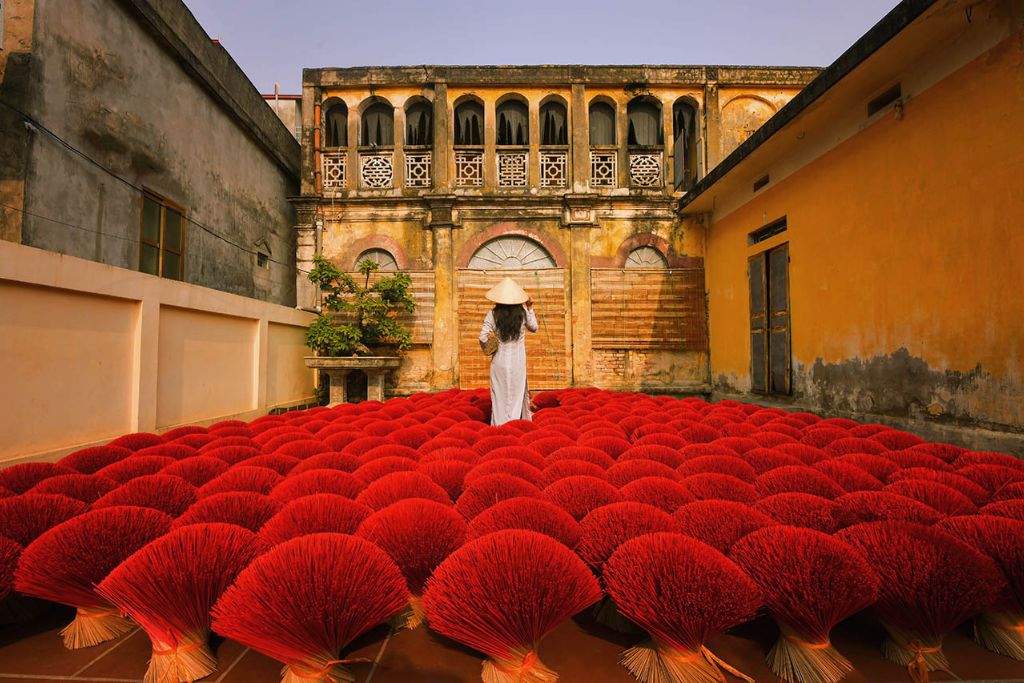The Ao Dai is considered a cultural symbol closely associated with the image of Vietnamese women. Over time, amidst ups and downs and development, the Vietnamese Ao Dai has undergone changes while still preserving its traditional essence. It evokes pride and contributes to enhancing the graceful and gentle beauty of Vietnamese women.
Introduction to Vietnamese Ao Dai
When it comes to traditional Vietnamese attire, people immediately think of the “Ao Dai.” Throughout different periods and stages, along with the historical developments, the Vietnamese Ao Dai has persisted through time, regarded as traditional attire, a symbol in the culture of the Vietnamese people.
Over a thousand years ago, when the Trung Sisters rode elephants with lances, the image of the Vietnamese Ao Dai appeared in the lives of the Vietnamese people or on bronze drums like Ngoc Lu, Hoa Binh, Hoang Ha, and Dao Thinh. In general, the Vietnamese Ao Dai has accompanied the glorious years of the nation, becoming a source of pride and an internationally recognized symbol. Throughout various periods and historical changes in Vietnam, the Ao Dai has always endured the passage of time. It remains a traditional costume with a deep imprint of Vietnam’s ancient history for thousands of years.
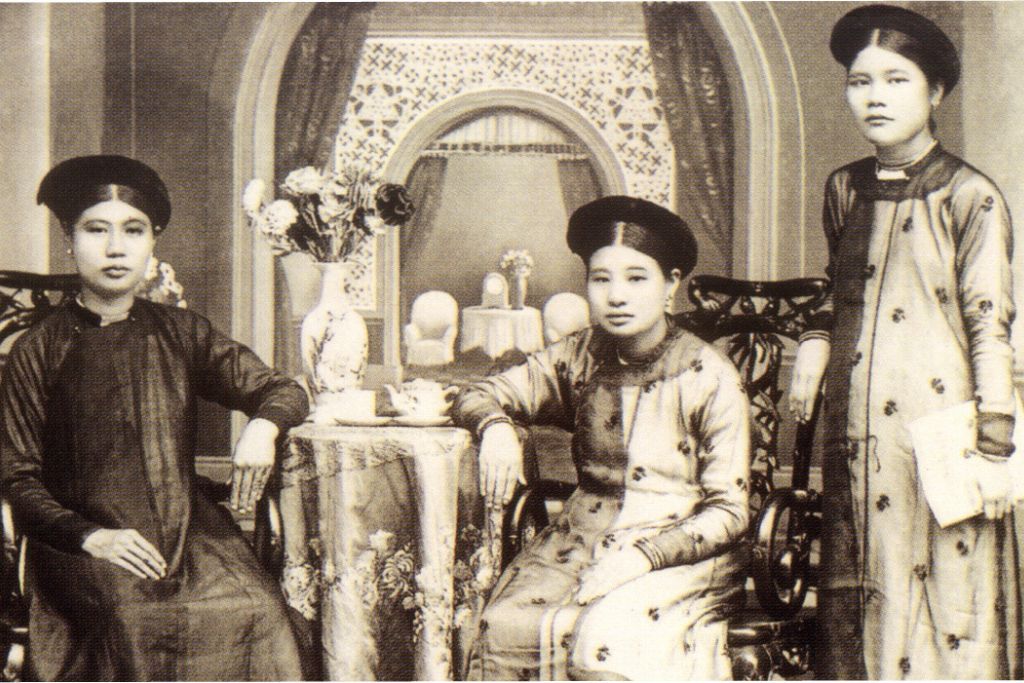
The Vietnamese Ao Dai symbolizes purity. Despite its seemingly simple appearance, it carries profound meanings. The traditional Ao Dai has been preserved by the Vietnamese people through various eras, treasured to be passed down to future generations. It not only testifies to Vietnam’s changes but also endures time, becoming the national costume. For a long time, the Ao Dai has been a cultural symbol closely tied to the image of Vietnamese women. Despite numerous developmental phases, the Ao Dai has continuously evolved while maintaining its traditional essence, contributing to highlighting the graceful and gentle beauty of Vietnamese women. The Ao Dai is a source of pride for the Vietnamese people, embodying the essence, soul, and character of the Vietnamese.
Vietnamese Ao Dai Honoring the Beauty of Women
If the Japanese take pride in the kimono and the Koreans are famous for the hanbok, the Vietnamese are always known for the elegant and graceful Ao Dai. The Vietnamese Ao Dai, as a whole, is a costume that is both revealing and modest, full of freedom and spaciousness. Despite this, it ensures sophistication, elegance, and necessity. Therefore, the Ao Dai is easily popularized across all social classes, suitable for various spaces, times, and different events.
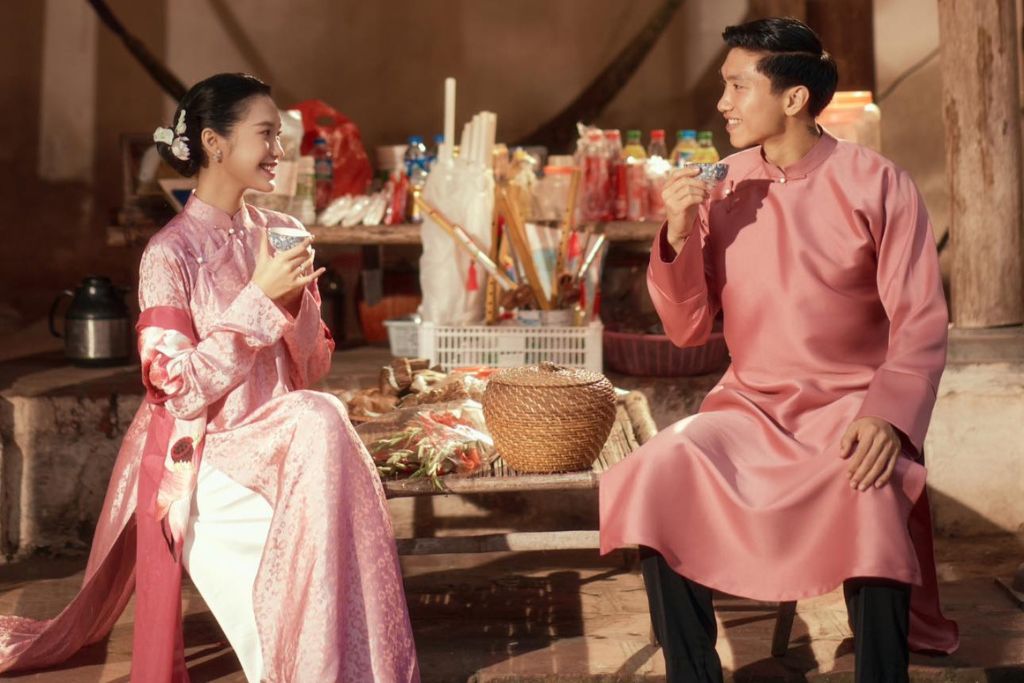
Ao Dai – Breath of Vietnamese Culture
Through various historical and cultural periods, the Vietnamese Ao Dai remains a traditional costume during significant family, clan, community events, or national festivals. Women increasingly wear the Ao Dai in schools, offices, and businesses. During significant national events and on international forums, it showcases the solemnity and elegance of Vietnamese women.
Simultaneously, the Ao Dai contributes to honoring the cultural life of the Vietnamese people, reflecting the spirit of solidarity. The Ao Dai is not just beautiful; it carries many meanings. Nowadays, Vietnamese families highly value the thread of affection. The Ao Dai is a special thread that binds families together, especially during family reunions.
The significance of the Ao Dai in the minds of the Vietnamese is like the Vietnamese language: deep, profound, familiar, and full of pride. Despite the many stages and fluctuations in its long history, the Ao Dai has never lost its unique position in the hearts of the Vietnamese; instead, it increasingly brings pride because it is not only a costume but also an artistic masterpiece.
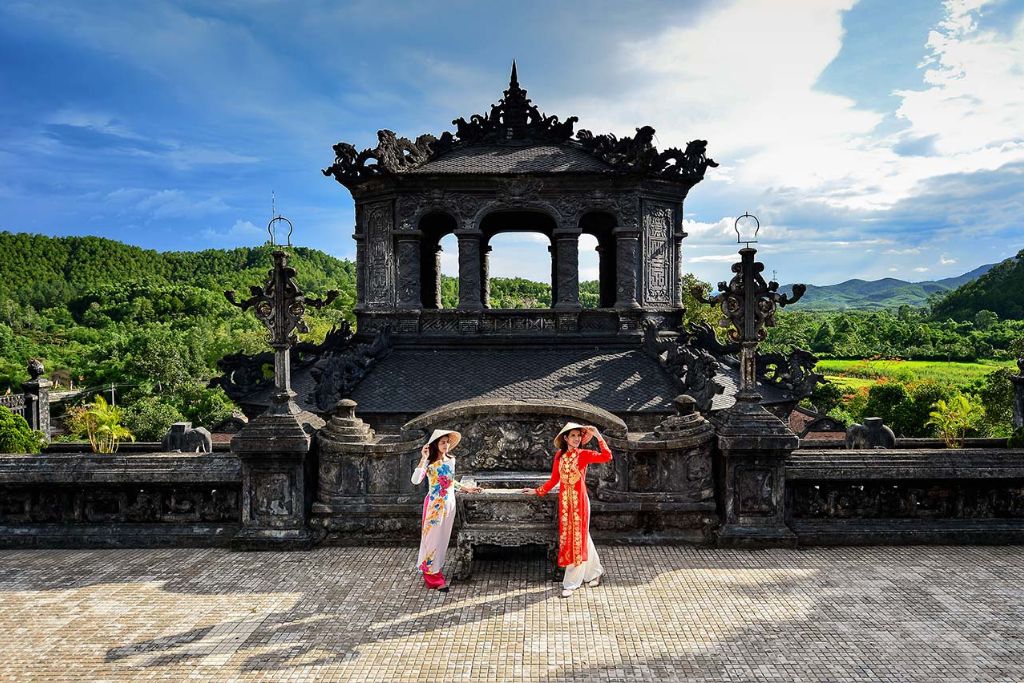
The Ao Dai is one of the vital elements of Vietnamese culture, encapsulating the worldview and spirit of the Vietnamese people. The Ao Dai is used by all age groups, everywhere, and is the national costume of Vietnam. Although the Ao Dai is not used as frequently nowadays as before, it is still the top choice for Vietnamese people on special occasions such as Tet (Lunar New Year), weddings, graduations, and both national and international beauty pageants.
Traditional Ao Dai Signifying Family Values
Each family is a miniature society with its own lifestyle, various domestic customs. However, there is one thing that every Vietnamese cannot do without, that is the Ao Dai on Tet holidays. The Ao Dai is always a symbol representing the joyful atmosphere, the family reunion of Vietnamese families on special occasions. Besides, the “family” meaning of the Ao Dai is not just “family” in the narrow sense but the broader sense of “Vietnamese family.”
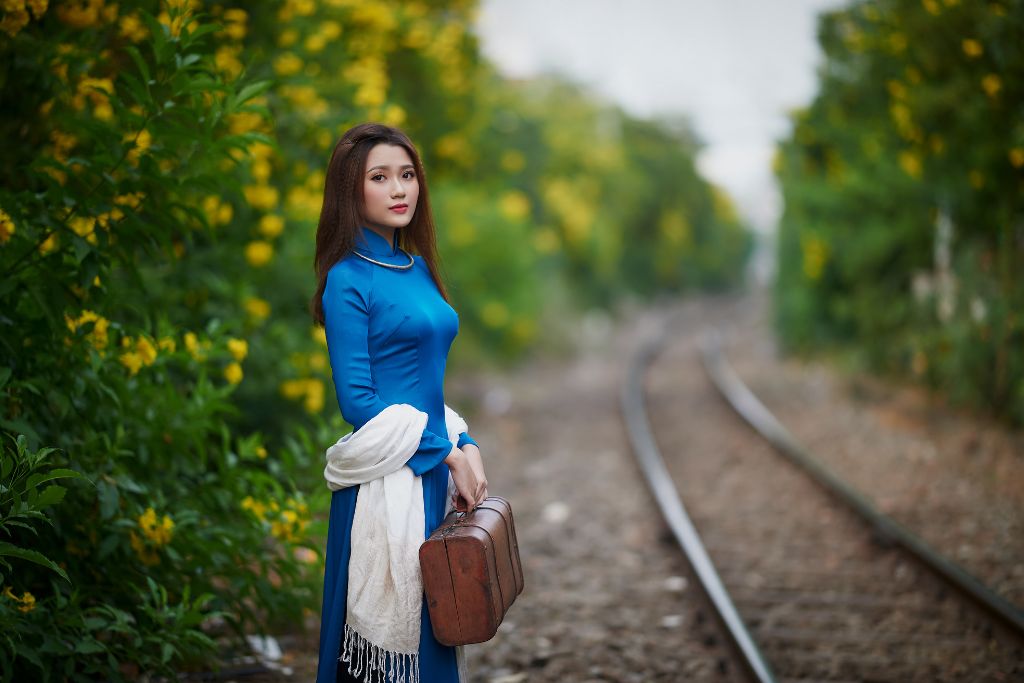
Especially during holidays and Tet, when stepping out, one can see everyone gracefully dressed in new Ao Dai on the streets, creating an illusion that we are all one family, sharing the same way of life. Millions of Vietnamese people unite in the Vietnamese Ao Dai during these special occasions.
It is not by chance that Vietnamese families cherish and prefer to choose the Ao Dai for important family events. The Ao Dai not only represents a graceful and elegant appearance but also has deep cultural and traditional meanings, reflecting the length and preservation of Vietnam’s history.
Spreading Cultural Traditions
The Ao Dai is a source of pride for Vietnamese culture and its people. It is not only aesthetically valuable but also serves as a means to spread the cultural traditions of the Vietnamese to the world. Not only do tourists coming to Vietnam get to admire the Ao Dai, but there is also a presence of Ao Dai in faraway Western countries. Because “wherever Vietnamese people are, there will be the Ao Dai,” for many years, Vietnamese expatriates have proudly worn the distinctive Ao Dai on Western streets during special, significant occasions for the Vietnamese.
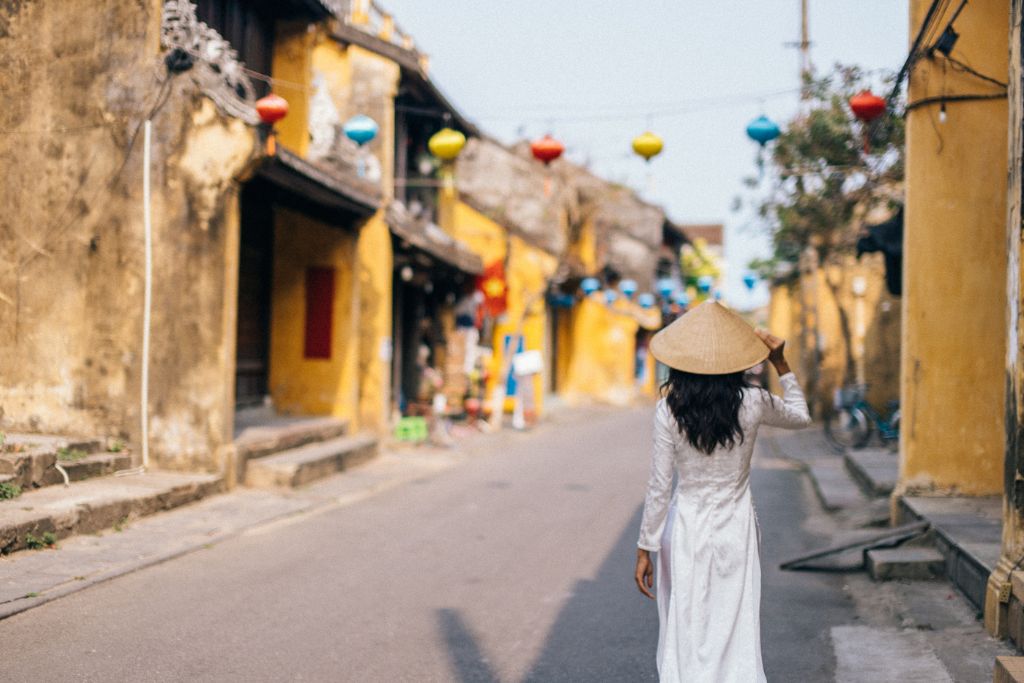
Through strong, proud, confident actions, and by valuing the meaning of the Ao Dai, Vietnamese people abroad have somewhat promoted the traditions of the Vietnamese people through the Ao Dai in the land of “guests and homeland.”
It would not be an exaggeration to say that the Ao Dai is not just a costume; it is a painting. The Ao Dai portrays the images of life, people, culture, tradition, and the ups and downs in the long history of Vietnam. The Ao Dai serves as a means to promote Vietnam, the historical significance of Vietnam to the international community. Moreover, it is a memorable item, reminding Vietnamese people abroad that “no matter who they are or where they go, they are still Vietnamese.”
